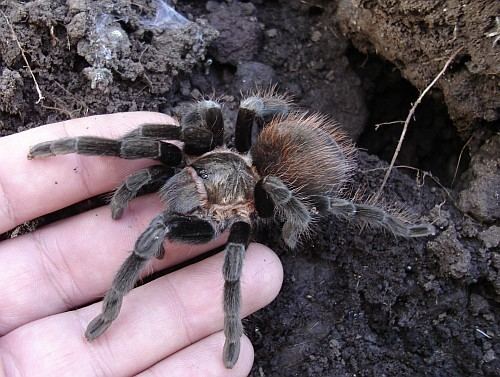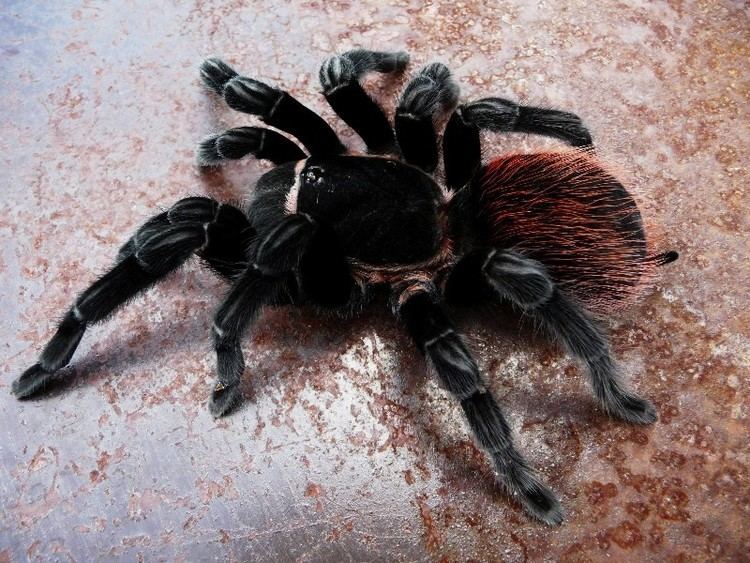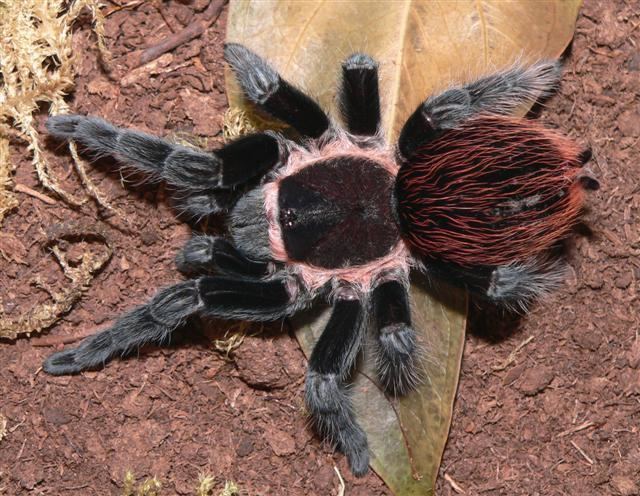Kingdom Animalia Order Araneae Genus Brachypelma Higher classification Brachypelma | Phylum Arthropoda Family Theraphosidae Scientific name Brachypelma vagans Rank Species | |
 | ||
Similar Brachypelma, Tarantula, Brachypelma albopilosum, Mexican redknee tarantula, Brachypelma boehmei | ||
Brachypelma vagans mexican red rump has flipped over
Brachypelma vagans is a species of tarantula known commonly as the Mexican red rump or Mexican black velvet. It ranges predominantly in Mexico, but can be found as far south as Belize, Yucatan, El Salvador, and Guatemala. They are terrestrial, burrowing spiders. The reason for the name red rump is because of its distinctive red hairs on its abdomen. Like most tarantulas, they will eat anything they can overpower, which is usually insects, but small lizards and rodents may also be consumed. They can grow up to a solid 6.5 inch leg span, with males typically being smaller and thinner than the females. They prefer scrubland habitats.
Contents
- Brachypelma vagans mexican red rump has flipped over
- Brachypelma vagans mexican red rump tarantula fruit beetle larvae feeding
- In captivity
- In Traditional Mayan Medicine
- References

In 1996, Brachypelma vagans was discovered in the wild in St. Lucie County, Florida. It is now considered an established non-native species in that state, where it is thought to have been introduced through either accidental or intentional releases of specimens imported via the pet trade, although their numbers have been dwindling due to many B. vagans eating insects poisoned by pesticides.

Brachypelma vagans mexican red rump tarantula fruit beetle larvae feeding
In captivity

B. vagans is frequently kept and bred in captivity. They are typically docile, though they can be skittish and prone to releasing urticating hairs. Females are long-lived, potentially reaching 15 years of age. Due to its popularity in the pet trade, B. vagans is listed under appendix II of CITES to prevent illegal removal and international trade. This trade, combined with habitat destruction and a high rate of mortality prior to sexual maturity, means that B. vagans is considered vulnerable to extinction.
In Traditional Mayan Medicine

The Ch'ol Maya consider these spiders to be positive, and use them medicinally. A hierbatero kills it, then crushes it, mixes it with spirit alcohol and strains out any irritating hairs with a traditional cloth. The beverage is used for the treatment of "tarantula wind," the symptoms being chest pain, coughing and asthma. The venom peptide GsMtx-4 is being investigated for the possible treatment of cardiac arrhythmia, muscular dystrophy and glioma.


